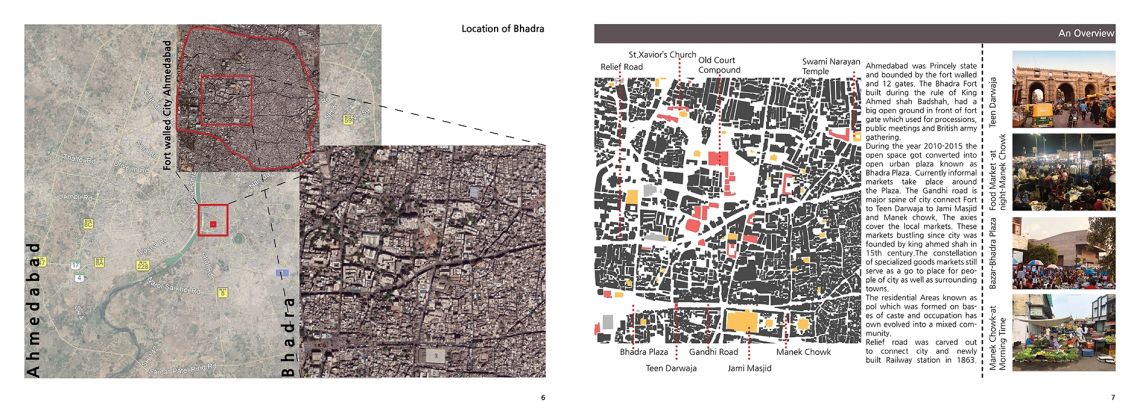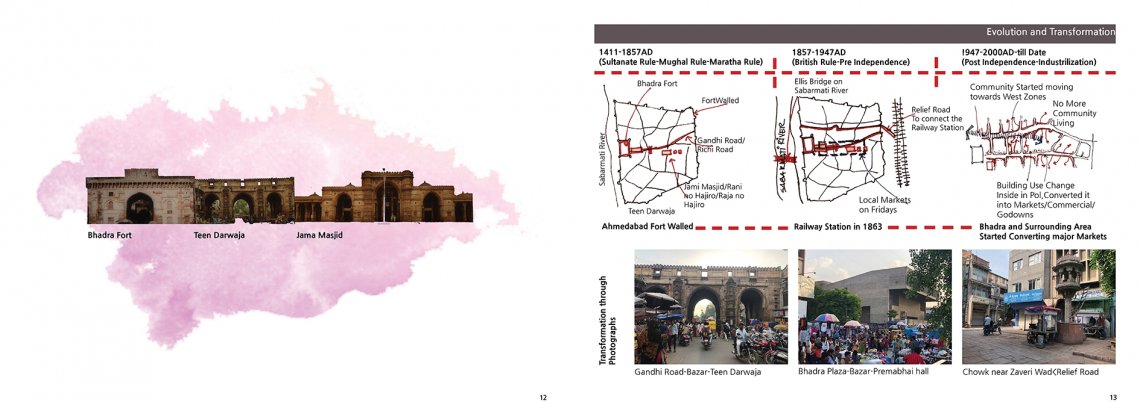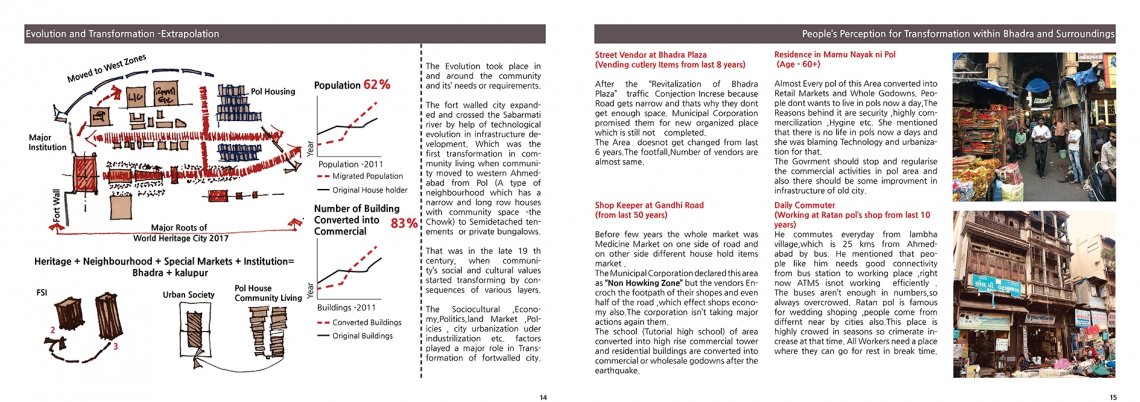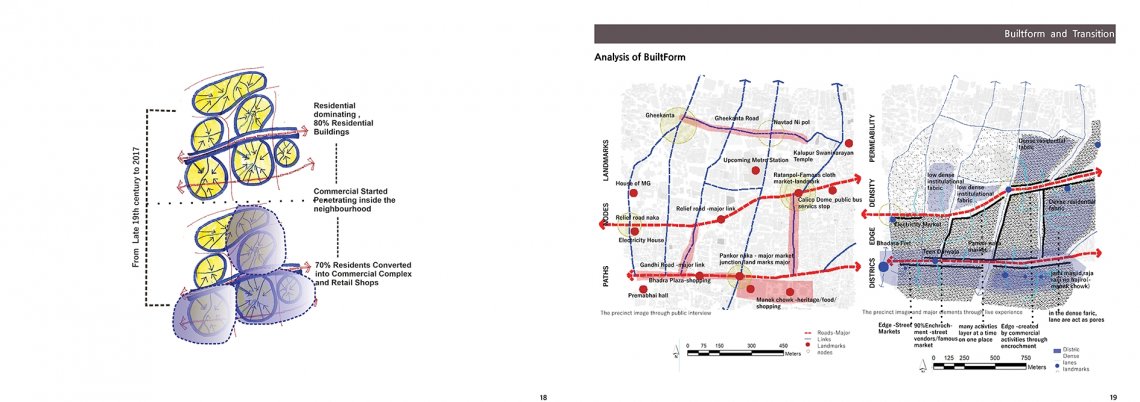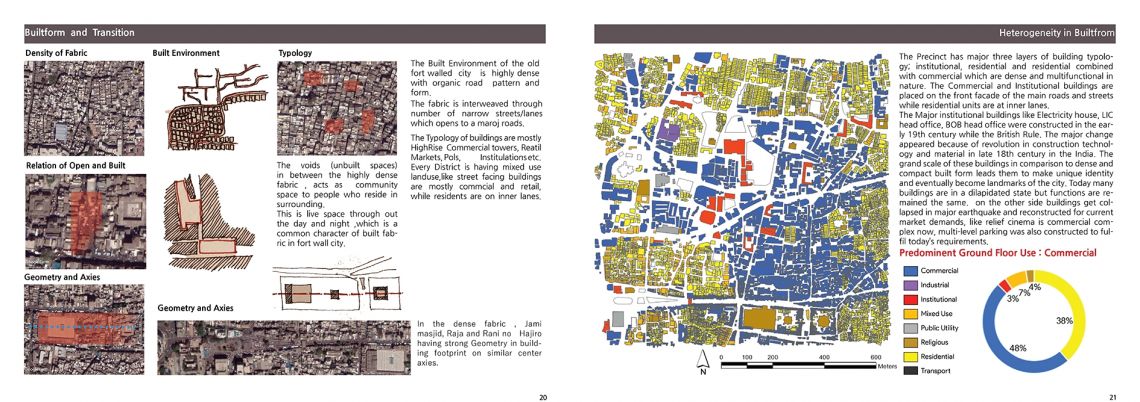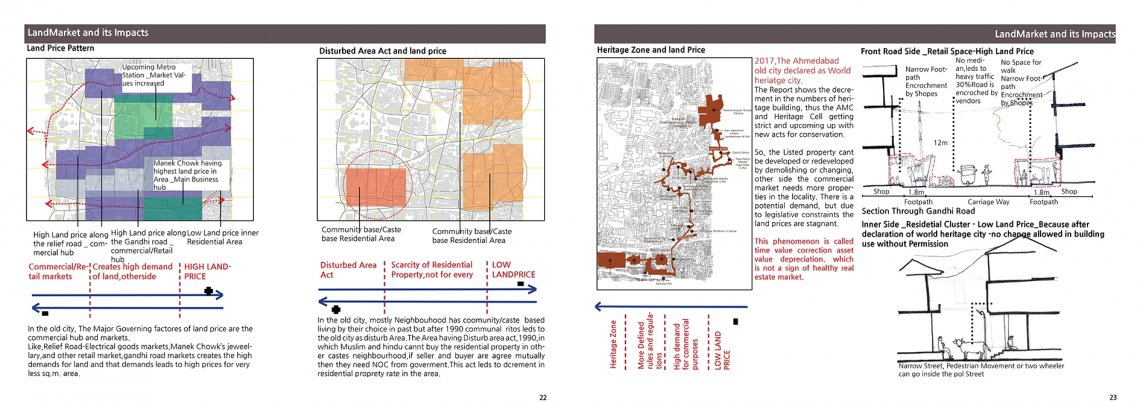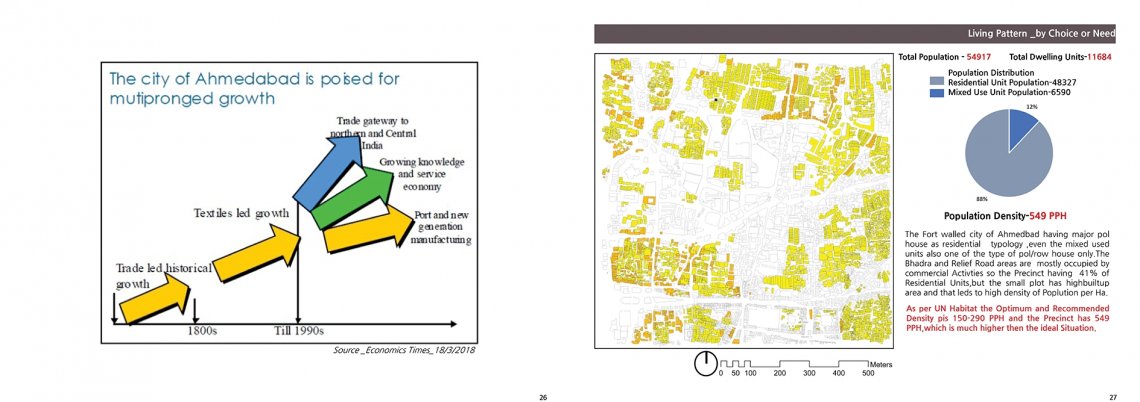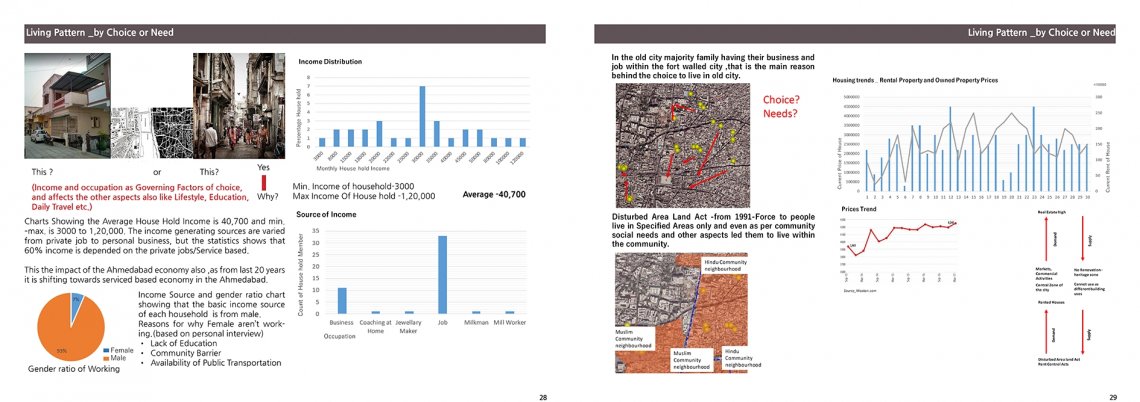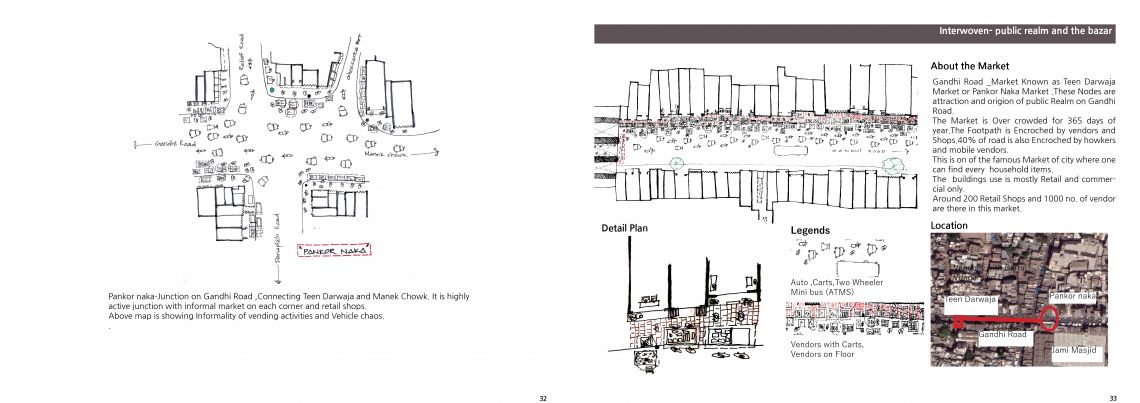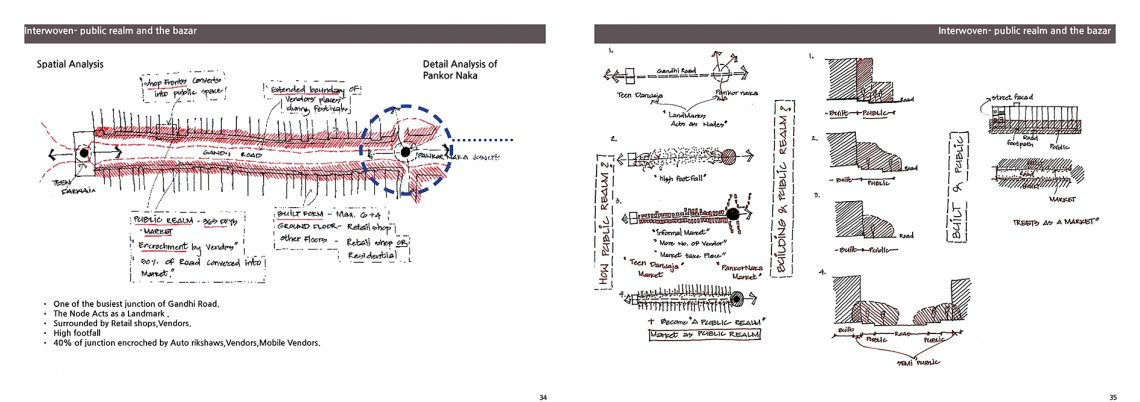Your browser is out-of-date!
For a richer surfing experience on our website, please update your browser. Update my browser now!
For a richer surfing experience on our website, please update your browser. Update my browser now!
Cities have long been at the heart of trade and economy as well as power. When it comes to Ahmedabad, Bhadra is the centre of the centre. The city was established on the banks of river Sabarmati by the Ahmedshah Badshah in 14th century. Bhadra precinct was historically a place where king stayed and the adjacent grounds were the place for processions, public assembly, festive gathering, trade and auctions. Even during Maratha and the East India company rule, Bhadra Chowk witnessed the display of public agitation and protests. The legacy of Bhadra chowk still lives on in its evolved manifestation. Bhadra Chowk was used as a bazaar after independence. Gradually, the bazaar has evolved in to a large trade centre that would attract traders and merchants from places and beyond. This economic powerhouse started a trend for people in the surrounding neighbourhoods to have jobs and businesses. Even today, generations of business people live in the same neighbourhood. The pressure of commercial activities led to the massive transformation in terms of land use and land utilization. Residences started to have lower floors for commercial activities which led to the highest concentration of mixed use building in the area. The precinct has 48% of commercial, 38% of Residential and 14% of others land use, which was opposite before the mid 19th century. The precinct was Predominantly residential Precinct and today commercial stands over.
